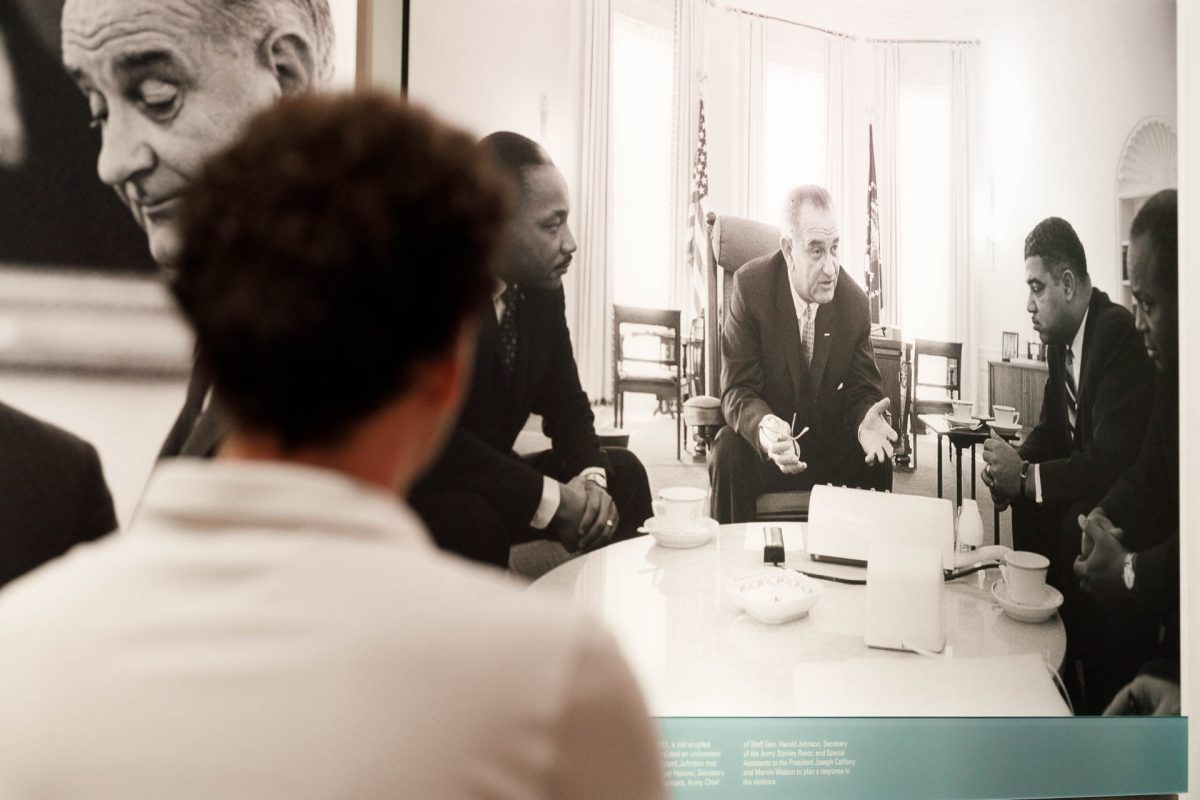Political power in the United States is often thought of in connection with executive power and with the presidency. This perception, which narrows the societal conception of how governmental change is made, is contributing greatly to the divide between our nation’s core political groups.
When the presidency is the most important component of our political system, and executive orders are the main method for accomplishing administrative goals, power can only be held by a single party at a time. To restore an atmosphere of communication and collaboration where the needs of both parties are met for mutual benefit, legislative power must again become a point of focus in American politics.
For younger Americans in particular, the problematic focus on executive power has only been exacerbated. Many of them have only lived through a hyperpolarized political system where Democrats are liberal and Republicans are conservative. This sort of black and white definition of party lines is surely baffling to the seasoned political historian. For a majority of the previous century the South, which features the prominently conservative states of Texas, Alabama, Mississippi and Georgia, were so strongly for the Democratic party that they were known as the “Solid South.” These states were arguably just as conservative as they are today, but they represent an era of politics where both the Republican and the Democratic party had liberal, moderate and conservative wings.
Guidance in response to this problem comes to us from the smoky back rooms of the U.S. Senate, from one of the greatest legislative tacticians of all time and one of the most hated presidents of all time. His name is Lyndon Baines Johnson.
In the late 50s, Johnson, at this time a U.S. senator, accomplished one of the greatest feats of legislative genius that our country has ever seen: The passage of the Civil Rights Act of 1957, an act that would help protect the African American right to vote, as well as open the door for further civil rights legislation later on.
In 1957, calls for civil rights legislation had reached a fever pitch, and both Democratic and Republican figures were calling for change. Firmly opposed to civil rights, though, was the “Solid South.” Though the South controlled only a small portion of votes, the Southerners, led by their fearsome leader Richard B. Russell, had been blocking civil rights legislation for decades. This time, though, something was different: the Senate Majority Leader, Johnson, was going to fight for civil rights.
Working desperately to pass legislation before the end of the legislative session, Johnson ran his hand along the fortress of bigotry that was the South, and for the first time in his life, he felt cracks. Johnson realized that Southerners believed deep down that they’d have to finally give way to change in civil rights at some point and that a watered down bill might be acceptable to them. The price of passage for the Southerners was that the legislation be largely performative. A high price to pay, perhaps, but for the first time, there was, in fact, a price.
On the other side, some liberals were furious at the idea of African Americans being forced to wait longer for real change, change that was promised almost 100 years before with the Emancipation Proclamation, when the Confederacy was defeated in the Civil War. This century of waiting had caused Civil Rights leaders to aim high, for complete reformation. Johnson’s view however, was entirely practical. He knew that no matter how morally just comprehensive civil rights legislation might be, it would never be passed until the South agreed.
He argued that the passage of a weaker bill, however performative, would finally mean victory for the cause of civil rights. By getting a foot in the door, they would prepare the nation for more comprehensive civil rights legislation in just a few more years.
However, only a portion of the puzzle was complete once Johnson had both sides in agreement. The Southern senators could be persuaded not to filibuster the bill, but they could not be persuaded to vote for it. Doing so would have meant career suicide for them, and as such, Johnson was forced to find the necessary votes not just from the slim Democratic majority — consisting of just two votes — but from a hodgepodge of individual senators from both sides of the aisle. Johnson promised to some of these senators the passing of legislation important to their local communities, for others he dangled promises of spots on important committees. His methods were varied, with each approach formatted to the individual it would be used upon, but the outcome was identical: support for his bill.
Through expert controlling, cajoling and commanding, on August 27, 1957 the Civil Rights Act of 1957 was passed through the Senate.
Johnson’s methods were precisely the sort of methods that political pundits decry today as “backroom dealing.” These methods were often ugly and technical, involving personal favors and vote trading.
These methods, though, were also fundamentally the methods of compromise, and the system where compromise is possible is the system of the legislature, a system where legislative power and legislative genius is what creates results.
If our nation is to create a deeper unity despite polarized ideologies, it must do so through compromise, and so it must do so using the legislature. Perhaps the methods of great Senate operators like Lyndon Baines Johnson can provide us insight as to how the sleeping giant of Congress can be reawaken today.




















Leif Rasmussen • Apr 16, 2024 at 6:28 pm
This is an excellently written piece and a very critical discussion to have right now. As mentioned in the article, I believe the true structure of power within our government unfortunately often eludes the laypersons of our generation (such as myself), and it’s refreshing and informative to be reminded of the importance of systems of power that exist beyond simply the executive branch.
Taha • Apr 16, 2024 at 9:55 am
Great article. Reading this felt like an asthmatic taking a hit of their inhaler after a marathon.
Martha Moesker • Apr 15, 2024 at 10:48 pm
What an interesting and hopeful article.
Joel Rasmussen • Apr 15, 2024 at 9:56 pm
This is a compelling piece. Well done!
I’d like to hear more about the factors you see behind the trend towards prioritizing executive power, especially among younger generations. What are the structural and cultural shifts that have caused this?
Your core argument is spot on, but I was left wanting to hear some of your ideas for how we can revitalize Congress’s role and empower legislative compromise in today’s landscape. What specific reforms to institutions or incentives do you think would help? How can the public, especially younger voters, be educated on the issue? Do they care? What would make them care?
It’s worth acknowledging that there are risks and potential downsides to backroom deals, even as you highlight their necessity. I’d like to hear your thoughts on how to strike the right balance and establish appropriate guardrails.
Your conclusion gestures at LBJ’s approach, but I again found myself wanting to hear your thoughts directly spelling out your vision for a renewed focus on legislative power. What’s your call to call to action for young voters?
Lastly, your focus is on national politics, these same dynamics play out at the state level as well, since state legislatures are major policy making bodies too. How do you see these dynamics playing out in Texas politics? What’s the better path forward? And what’s the call to action for younger voters?
All in all, a fantastic piece. I look forward to more of your work.